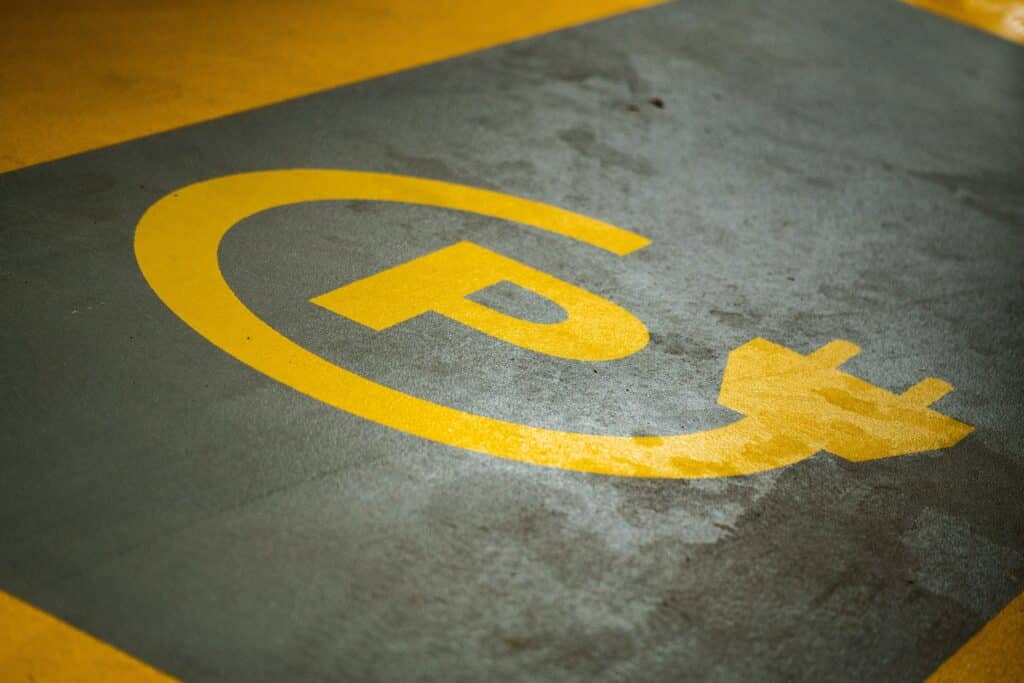Electro-mobility and public policy in LAC
Take a look at the measures LAC has put in place to achieve electric and sustainable transport systems and the potential areas where policy instruments should be focused in the future.
Topic of the Month: Gearing up for an EV revolution
by Daniel Schmerler Vainstein
Part I of the topic of the month article ‘Electromobility in Latin America and the Caribbean” (LAC) summarises the benefits of electric vehicles, namely the elimination of greenhouse gases and the reduction of air pollutants in cities, as well as measures to achieve electric and sustainable public transport systems in LAC.
Part II of the topic of the month article on Electro-mobility and public policy in LAC describes how the region is adopting measures to achieve electric and sustainable transport systems, highlighting the importance of understanding the benefits and limitations of electric transportation, so that we can identify its potential and the areas where policy instruments should be focused.
Electro-mobility and public policy in LAC
LAC has understood the importance of promoting electric mobility in order to help solve health, traffic, environment and energy problems. On this line, according to UN Environment, LAC cities are starting to implement some policies:
- Buenos Aires has started a pilot to incorporate eight battery electric buses.
- In Brazil, a pilot project of electric buses is currently being carried out in Rio de Janeiro, while pilot projects of electric taxis have been taking place in cities like Sao Paulo (2013), Rio de Janeiro (2014), Campinas (2015) and Belo Horizonte (2017).
- In Colombia, electric buses are being tested in Bogota and Medellin, whereas a project of electric taxis has been supported by the Municipality of Bogota, including 10-year taxi licenses, a monthly stipend during the first year and an exemption to restrictions on circulation based on the license plate (locally known as pico y placa).
- Mexico has also introduced an initial fleet of 20 electric taxis in 2015, and in 2018, Ecobici became the first bike sharing program in Latin America to include electric bicycles (340 pedal-assist units).
However, perhaps the country that has implemented the biggest policy in this aspect is Chile. During 2016 and 2017, Santiago started with a pilot project of two buses, in 2018 the city incorporated 100 more units and finally, in 2019, 183 buses were added. These buses have 250 km of range, have air conditioning systems and take between 3 and 4 hours to fully charge. Units- With currently 285 electric buses in Santiago’s public transport system, the city expects to have 2000 electric buses in 2022,this would account for 30% of the total fleet of buses. Something that needs to be highlighted about the Chilean experience, is the existence of a National Strategy of Electromobility, that was jointly approved by the ministries of Energy, Transport and Environment.
In Peru, we have adopted some initial measures and implemented pilot projects which should be taken into consideration. In order to reduce the price of this vehicles for final consumers, the Government has implemented excise tax cuts. Furthermore, there has been pilot projects for urban transportation through electric buses in Lima, and the introduction of the first electric bus in mining. In this case, the company uses the bus to transport workers of a mine and has installed a charging station 3998 meters above the sea level, the highest charging station in the world. Also in Pucallpa, a jungle city, a pilot for electric auto rickshaws has been carried. This is one of the main types of transport in this city, but currently these vehicles work on petroleum and gasoline, which is why its electrification could contribute to reduce air pollution. Plus, these vehicles have a solar panel installed on the roof, which allows to electrify the system by using green energies.

Also in Peru, the Ministry of Energy has published —for comments of interested agents— a Regulation on the promotion of electric vehicles, with a clear delimitation of roles for Peruvian institutions. As a regulator, Osinergmin would assume roles such as price setting (evaluate the convenience of electricity price schemes to promote efficient recharging of vehicles), supervision of technical and safety standards of charging stations, among others.
As we can see, most of the implemented measures are related to promote the introduction of electric buses in the fleet of public transportation. The introduction of incentives for the purchase of private electric cars has a different set of instruments, which can be classified into two groups: economic and non-economic. Economic instruments are those oriented to reduce the price of electric cars, such as subsidies and tax exemptions. On the other hand, non-economic instruments reduce operational expenditures, which contribute to reduce the total cost of ownership of these vehicles. Non-economic instruments include exclusive lanes or parking spots for electric vehicles, rebates on energy prices and the development of network of charging stations. Both kinds of measures are usually combined in order to encourage consumers to buy electric vehicles. As I have mentioned, in most LAC, public transport system still needs to be reformed, and the use of private cars is currently trying to be discouraged because of the traffic it generates. However, in countries with different realities, policy instruments for the reduction are already being implemented. Some of the most important experiences are Netherlands, Norway, Germany, United States and China. These experiences have been reviewed in a recent book we published, and whose linked you will be able to find at the end of this article.
Challenges for the electric system
The technological transition from conventional to electric vehicles is already taking place: in 2018, the distribution of electric vehicles was around 2 million units, which means an increase of 64% with respect to the previous year. The whole transition will, of course, take many years, but we already need to think about two significant challenges for our electric systems: 1) the need to increase the production of electricity, and 2) the mitigation on the environment of this additional production through clean sources.
How much more electricity will we need to produce? According to the calculations of International Energy Agency, if the 1.2 billion cars that circulate on the planet today were electric, they would demand 2300 terawatts/hour (TWh) per year. This represents 10% of all energy (21 000 TWh) that was consumed in the planet in 2016.
How will we produce this additional electricity? We certainly need to assure that this increased production will be based on clean energy, because, otherwise, we would just be translating pollution from cities to areas where energy plants are located. Considering that currently 25% of the total energy in the world is generated with renewable energy, this is a huge opportunity to continue the energy transition for existing and upcoming needs of energy. In LAC, energy generation is relatively clean: renewable energy (considering large hydroelectric projects) is actually 68% of the total production and, in Peru, it accounts for 44% of total production. Renewable Energies also bring some challenges themselves, which paradoxically can be undertaken by electric vehicles as we will see in the following section.

Benefits for the electric system
We have reviewed how electric vehicles can contribute to significantly reduce emissions and thus, improve air quality in cities and help fight against climate change. But we also highlighted that electromobility should be combined with the promotion of renewable energies so that this objective can be fulfilled. However, renewable energies (especially wind and solar) have important characteristics that need to be considered because of their impact on the electric system: they have a fluctuating nature, as opposed to controllable energy sources such as dammed hydroelectricity or natural gas plants. Their intermittency (which means that they can me temporarily unavailable) and unpredictability pose a significant challenge for dispatchability.
But as I mentioned, electric vehicles are also a solution for this problem. For decades, we have thought that storage of energy was impossible (or extremely costly), but electric cars have to potential to provide the storage that could manage renewable energy and provide greater stability to the electric system. This is usually referred to as Vehicle-to-grid (V2G) services, which enable electric cars to return electricity from their batteries to the grid, as would happen with stationary storages, allowing peak load levelling, among other services. Electric vehicles can be charged very late at night, when demand is relatively low (valley filling), and can return power to the grid in hours of high demand (peak shaving). Electric cars can also provide Vehicle-to-home services, serving as backup power for lighting, home appliances, etc. during emergencies. As we have seen, electric vehicles, by storing the excess of produced energy, can help stabilize the intermittency of renewable energies, and thus be thought as complementary technology for their promotion. Also, it is important to mention that these vehicles do not pose a risk for the electric grid if they are charged using smart charging solutions, that is, not plugging all electrics cars at the same time and charging them during the hours with the lowest electricity consumption.
In Osinergmin, as the Peruvian Supervising and Regulatory Agency for Energy and Mining Investment, we believe that electromobility is a topic that requires an active debate and proposals: in 2019, we published a book on concepts, policies and lessons learned about electric transport. We analysed the experience of 10 countries all around the world. We are currently working on translating this book into English, so that it can reach a broader audience, and we expect to publish it in the first semester of this year. As we have seen in this article, electromobility is a transversal topic, which affects health, environment, transportation and energy in a city. Electric vehicles can be thought as a solution to some of the most urgent problems in modern cities, but require from a regulatory framework and government planning for a proper development.
Read the previous instalment of the February Topic of the Month:
Electric Vehicle charging policy in India
Electric Vehicles and sustainable development in Spain
Electromobility in Latin America and the Caribbean Part I
Dive in deeper!
New Online Course! Electric Vehicles: a power sector perspective
Gain the knowledge you need to address the #powersector challenges posed by the ever-growing number of #EVs on a global scale in our new 5-week online course! #ElectricVehicles: a power sector perspective
🗓️REGISTER BY 31 August👉Learn more here: https://t.co/FC3eFgcJZ9 pic.twitter.com/4DPznf474A
— FSR Energy & Climate (@FSR_Energy) July 18, 2020
Learn more and save your seat!






